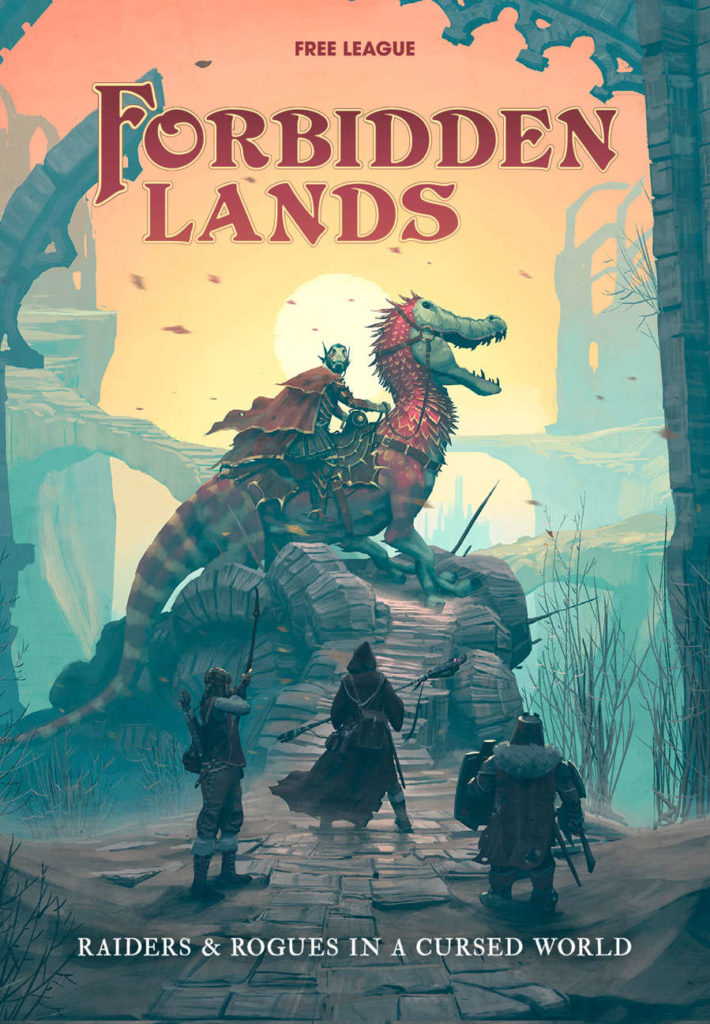I’m on a study project to improve my understanding of roleplaying games. To this end, I already have two reading projects, A Game Per Year and An Adventure Per Year. This is the third, with the goal of reading or playing 52 games made in the last few years. Originally I considered making this “A New RPG Per Week” and that’s where the number 52 comes from, even though a weekly schedule is probably not within my abilities.

“When you come at the king, you best not miss”, Omar Little cautions in episode 8 of the first season of The Wire.
In the case of roleplaying games, the king is D&D, a titan in terms of both sales and public perception. The definitive fantasy roleplaying game, it’s telling that D&D’s closest competitors such as Pathfinder are D&D derivatives.
The Swedish publisher Fria ligan has had a very strong run with games such as Coriolis, Mutant: Year Zero and Tales from the Loop. Forbidden Lands feels like an attempt to come at the king, so to speak.
Forbidden Lands is full of cliche and that’s its boldest choice. It aims at old school default fantasy. It’s more low fantasy than D&D but the traditional elements are all there: Dwarves and elves, fighters and sorcerers, monsters and treasure. The illustrations often bring to mind TSR’s house style circa 1988.
Trying to occupy the niche of default fantasy is a tall order but in terms of design and quality Forbidden Lands is a real tour de force. To go back to the Omar Little quote, it doesn’t miss.
The design builds on the system already used in the previous Fria ligan games, developed and refined for the purposes of old school fantasy adventures. The best stuff concerns traditional elements of exploration-based fantasy adventures that go beyond the character: Strongholds, setting up camp, random encounters and adventure sites.
All these have functional, effective subsystems that are inspiring, simple and evocative. The strongholds anchor characters in the world and the rules for basic movement, exploration and encounters give mechanical support to basic wilderness adventure elements that have been with us since The Keep on the Borderlands.
The game is set in the titular Forbidden Lands, an area plagued by strife and long cursed by a Blood Mist that has made travel exceedingly difficult. Now the mist has lifted and the inhabitants of small towns and villages journey forth to explore the ruins that surround them.
It’s an interesting setup because it makes it possible to see the landscape as new and full of discovery and adventure yet at the same time inhabited by people. You can have the classic elements of exploration-based roleplaying in a way that makes sense.
What’s more, the setup means that the basic unit of the adventuring party is more integrated into the world than in D&D. The characters are a bunch of locals who have decided to brave the newly accessible world around them in the hope of riches. They have personal connections to the environment around them.
In terms of tone, Forbidden Lands is often pleasantly down-to-earth. People feel more real and three dimensional than in standard fantasy stories. One of the structures you can build in your stronghold is the pigsty, in case you want to keep pigs.